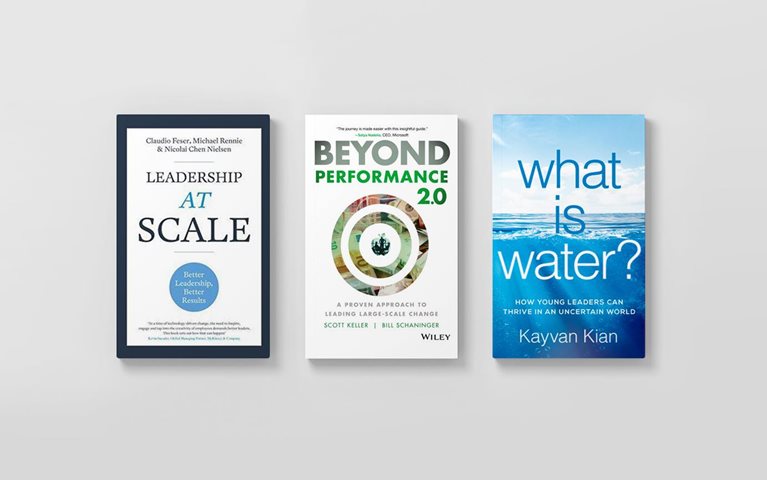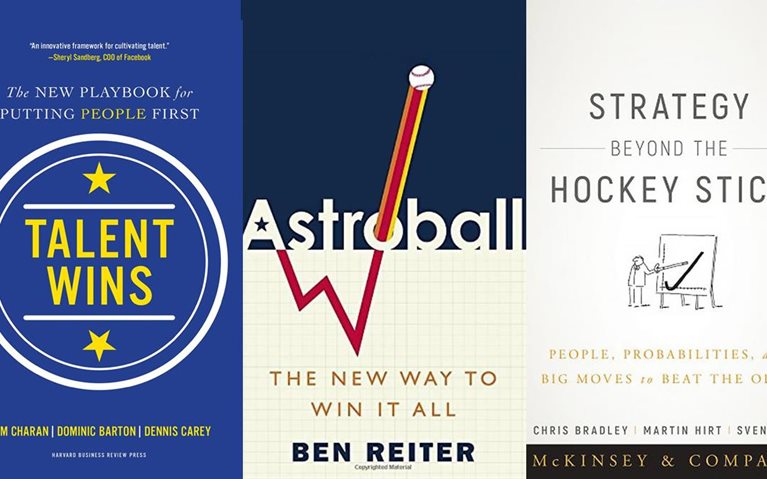CEO Excellence, McKinsey’s new book detailing the six mindsets of extraordinary leaders, is written for anyone who wants to inspire others and lead change within an organization. It’s a book of stories shared by 67 extraordinary leaders about the most important moments and insights from their own experiences running major businesses and organizations around the world.

It recounts times of public glory and personal failure, moments of epiphany, once-in-a-lifetime events, and the grinding daily work of leading complex organizations. Most importantly, it shares the thinking and behaviors top leaders have personally developed to thrive.
These insights, a sample of which are excerpted below, go beyond the C-suite, and they can shape the way we confront everyday situations where we’re asked to lead—at work, at home, and in our communities.
Don’t surround yourself with “yes” people.
One of a CEO’s first tasks is to carefully shape their top teams—and they differ in what they seek. After confirming expertise and proven experience, some leaders look for emotional intelligence, while others value passion, or the ability to balance the short and long term. One thing most CEOs agree on? Do not surround yourself with people who are afraid to disagree with you.
Sony’s Kazuo Hirai describes his approach to selecting a management team. “What I basically looked for was expertise and proven ability in [an area]…the TV business, digital imaging, the movie business, PlayStation…” On top of aptitude, he looked for attitude: “…a demonstrated ability to push back against their bosses and not be afraid to present their ideas and be bold about it.”
To many people, teamwork means getting along, but to Jamie Dimon of JPMorgan Chase, “…the best team player is the one who puts up their hand and says, ‘I don’t agree, because I don’t think [this] is in the best interest of the client or the company.’”
Time management? It’s about the moment.
Being a CEO means being subject to a crushing schedule; everyone has his or her own time management approach: color-coding calendar entries; listing quarterly priorities; safeguarding chunks of free time for last-minute emergencies; intensive delegation to teams. In fact, CEO time management is one of the most-read-about topics in business journalism today.
But even the most calibrated time-management techniques won’t work without the right mindset: the ability to compartmentalize and focus on the moment. It’s vital to high performance and one of the most challenging aspects of the job from an emotional perspective. As Galderma’s Flemming Ornskov advises, “When you’re there, [be]…there in body and mind.”
US Bancorp’s Richard Davis says, “[It’s] essential. If you bring every burden to every meeting…the day [will] start to pile up on you…You just have to take everything as it is and isolate it, manage it; isolate it, manage it...People [will] start seeing that you are discipline and focused.”
In a storm, look beyond the horizon.
Managing crises comes with the CEO role; it could be company-specific such as a product failure, or an external catastrophe, such as the pandemic. While CEO Excellence outlines protocols, such as stress tests, scenario planning, and how to set up a command center, it emphasizes that for a CEO—or indeed anyone—facing a crisis, it’s essential to keep a long-term perspective.
“It doesn’t matter how difficult times are, there is always a world after a crisis. Even if the situation looks bleak, believe in yourself and your people and maintain a positive attitude,” counsels Herbert Hainer, CEO of Adidas from 2000-2016. "Don’t let yourself or the company be influenced too much by uncontrollable circumstances.” The company’s current CEO Kasper Rorsted, points out: “…a crisis [can] actually be the best time to make radical change…you can be dogmatic and say, ‘We’re not going to do this anymore’ whether it’s cutting unnecessary travel, leveraging digital channels, or anything else. It’s a time to move two or three years ahead of where you would have been otherwise.”
A longer-term view can also help a leader sidestep tempting short-term solutions that ultimately may be harmful. When hit by a recession, Eaton’s Sandy Cutler didn’t want to resort to layoffs, noting, “When we grow again, we’re going to need the skills of all of these people.”
Be the energy you want to see.
The mood of the CEO can permeate the entire organization. “My leadership mantra, which I think about literally every day, is that the role of a leader is to define reality and give hope,” says Ken Chenault of American Express. But it has to be genuine and pragmatic, or employees will see through it.
Marjorie Yang of Esquel reinforces the importance of showing up with a positive attitude. “My job is to drive away fear,” she says. “Fear is the worst enemy of any business….As a leader, my job is to maintain...and radiate confidence.”
Andrew Wilson of Electronic Arts believes people look to CEOs today for more than professional guidance: they look for personal, spiritual and philosophical support. It's important to show humanity to inspire people.
He offers an example. During a pandemic zoom call with seven thousand employees, he paused the call to make a paper airplane for his five-year old son who had just walked into the room. “It took thirty seconds…afterward people reached out and said: ‘Thank you. You just gave us permission to be parents…to spend the time,’” he said. “When you talk to great CEOs, the things I hear about aren't how big the company is, how high the share price is, how much money they make...” he observes. “[It’s] how they make their people feel. That’s the legacy of a great CEO.” And a leader of any kind.
To learn more about CEO Excellence and order your copy, please visit the book’s website.

